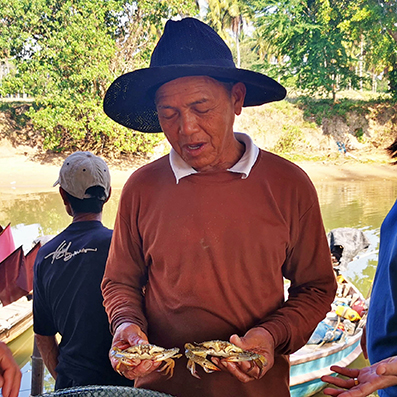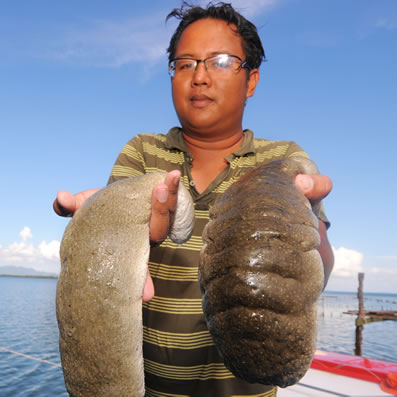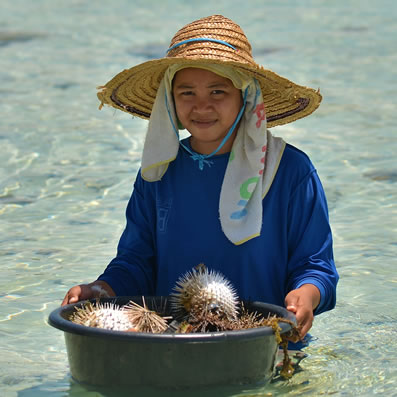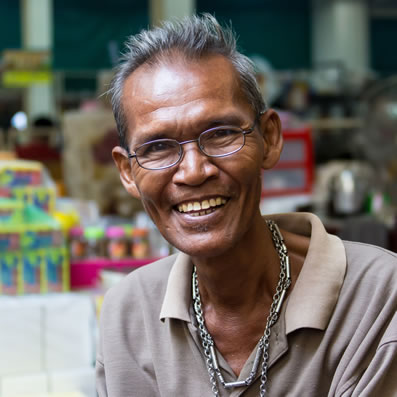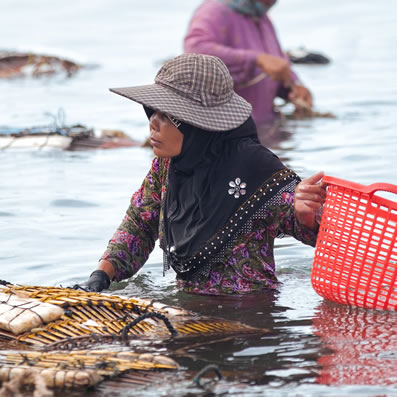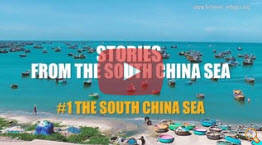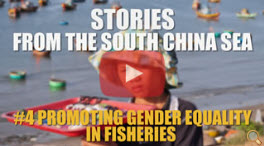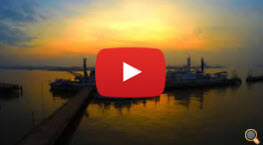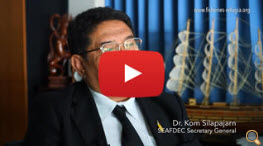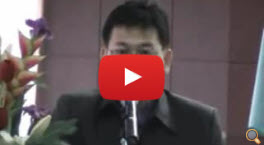THE SOUTH CHINA SEA FISHERIES REFUGIA INITIATIVE
FISHERIES REFUGIA PROJECT SITES
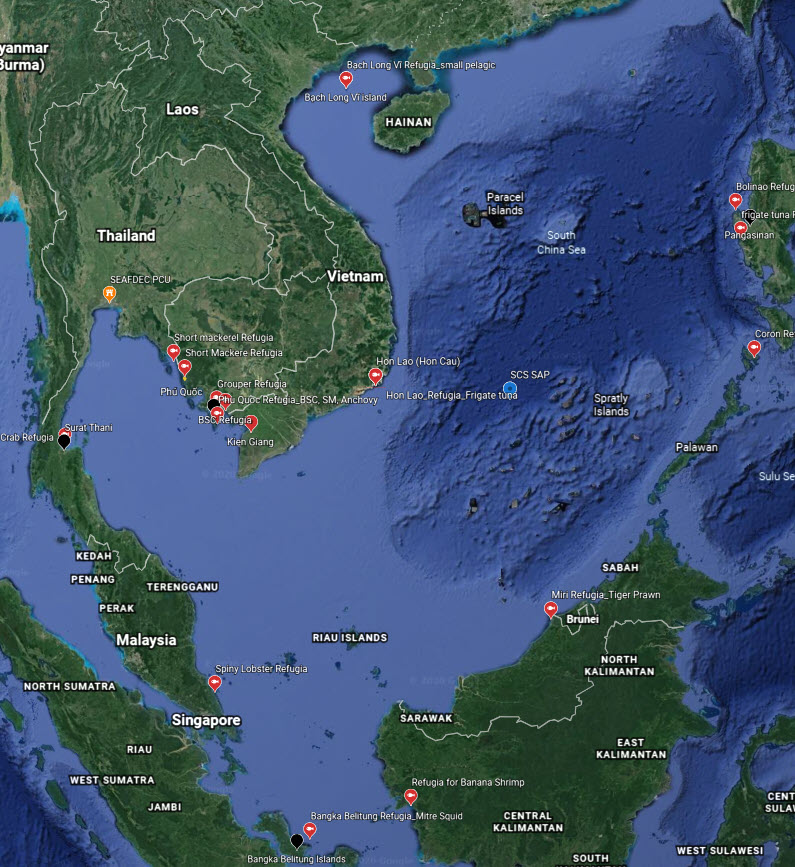 Click Here for
Click Here for More
Information
SCS SAP PRIORITY SITES (Habitat Linkages)
 All SCS SAP and
All SCS SAP and Fisheries Refugia
Priority Sites CHINA HABITAT
SITES CAMBODIA HABITAT
SITES INDONESIA HABITAT
SITES PHILIPPINES HABITAT
SITES THAILAND HABITAT
SITES VIET NAM HABITAT
SITES
Meet our Stakeholders
Social Media
Social Media
Balancing Rights through Gender Equality in the GEF Fisheries Refugia Project
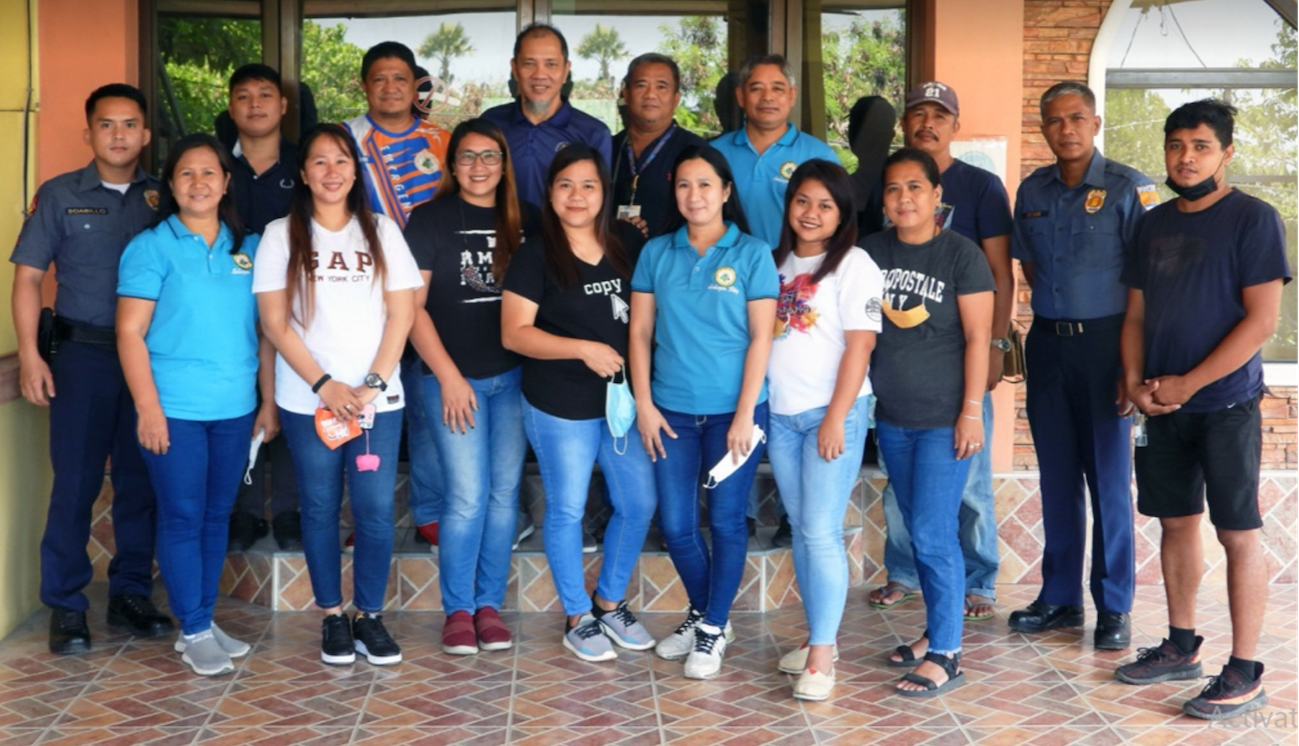
Photo: NFRDI, Philippines
The project “Establishment and Operation of a Regional System of Fisheries Refugia in the South China Sea and the Gulf of Thailand” (Fisheries Refugia Project) was implemented by the United Nations Environment Programme (UNEP) with financial support from the Global Environment Facility (GEF). The Southeast Asian Fisheries Development Center (SEAFDEC) executed the Project from 2016 to 2022 in partnership with the fisheries agencies of the riparian countries of the South China Sea area, namely: Cambodia, Indonesia, Malaysia, Philippines, Thailand, and Viet Nam.
Focused mainly on establishing a regional system of fisheries management areas (fisheries refugia) in the South China Sea and Gulf of Thailand, the Project comprises four components including 1) establishment of operational management at 15 priority fisheries refugia, with community-based refugia management plans being the key outputs; 2) strengthening of the enabling environment for the formal designation and operational management of refugia; 3) strengthening of information management and dissemination for enhancing the national uptake of best practices in integrating fisheries management and biodiversity conservation, and in improving community acceptance of area-based approaches to fisheries and coastal environmental management; and at the national level; and 4) strengthening the cross-sectorial coordination for integrated fisheries and environmental management while harnessing national scientific and technical expertise, and knowledge required to promote policy, legal and institutional reforms for fisheries refugia management in the participating countries.
Specifically, Component 1 of the Project encompasses five expected outcomes, one of which is to bring about “Empowered fishing communities, particularly artisanal fishermen and women involved in inshore gleaning and processing, for enforcement of agreed management rules at 15 priority refugia sites in the South China Sea and the Gulf of Thailand.” This outcome has been realized by mainstreaming gender not only in the Project development but also in the implementation through the conduct of capacity-building activities at the community level. The main objective of the capacity-building activities was to enhance the capabilities of target community members, particularly artisanal women and men fishers, while participating in refugia management at the 15 fisheries refugia sites.
Gender mainstreaming in fisheries of Southeast Asia
Gender inequality is present when the roles of women and men in all sectors of society vary not only in terms of participation in economic endeavors but also in decision-making and when the behaviors, aspirations, and needs of men and women are expressed variably (ILO, 2000). The unequal power relationship between women and men in many cultures has driven women to a disadvantage in controlling resources, accessing services, and taking advantage of new opportunities and changes affecting their lives. Williams et al. (2006) observed that other economic sectors, such as agriculture and forestry, had long been advancing the need to mainstream gender in policy development. However, fisheries policies have traditionally targeted men to be engaged in exploiting and managing the resources, while women have usually been excluded from planning and mainstreaming fisheries activities (Ruangsivakul, 2011).
Another reason why the fisheries sector has long overlooked gender is the perception that it is a masculine industry, even though fisheries research has shown that the sector has heavy participation of women. Although the capture fisheries sub-sector of the Southeast Asian region may have been associated with men, women also contribute significantly to post-harvest, processing, and marketing as they continue to perform varied vital roles such as onshore laborers, traders, buyers, and financers in small-scale fisheries (Satapornvanit, 2018). Moreover, the involvement and contribution of women in fisheries have been widely accepted as more significant than previously perceived, considering that women have been assumed to comprise almost half of the labor force in small-scale capture fisheries-related activities. While men are fishing in waters further from the shore, women are heavily engaged in small-scale local fisheries activities, e.g., harvesting shellfish or seaweeds, repairing nets, processing fish products, and marketing, all of which have been carried out by women in addition to their duties, such as running their households and taking care of their children. Therefore, it is necessary to recognize women's largely ‘invisible’ role in small-scale fisheries so that relevant policies and development programs aimed at improving the livelihoods of small-scale fishers would be successful (Needham, 2011).
Furthermore, SEAFDEC has made several initiatives and implemented projects and activities that take into consideration the new paradigm in sustainable small-scale fisheries development that aim for gender equality and equity in the fisheries sector, especially the small-scale fisheries and aquaculture which dominate the fisheries sector of the Southeast Asian region (Box 1).
Box 1: SEAFDEC programs and projects integrating gender in fisheries and aquaculture of the Southeast Asian region
- The SEAFDEC Gender Strategy was developed to facilitate gender mainstreaming at all levels of the organization and serve as an overarching organizational framework to boost its efforts in integrating gender in its programs, projects, and activities. The SEAFDEC Gender Strategy also intends to support the integration of gender perspectives in fisheries and aquaculture in the Member Countries of SEAFDEC (SEADEC, 2019).
- SEAFDEC, with support from the Government of Sweden and in partnership with IUCN/Mangrove for the Future (MFF) and Stockholm Environment Institute (SEI), conducted a regional gender study in 2017-2018 in Cambodia, Myanmar, and Thailand. The results indicated that women and men had generally been involved in various fisheries-related activities. However, regarding decision-making and land ownership, women had less involvement; the household leaders mainly were men because of the common belief that men make better decisions than women. The Study, therefore, recommended the need to empower women so that gender equity and equality are attained in fisheries community development projects and activities (SEAFDEC/TD, 2020).
- SEAFDEC developed the Practical Guide for Gender Analysis in Small-scale Fisheries and Aquaculture in Southeast Asia (Practical Guide)
- SEAFDEC Training Department (SEAFDEC/TD), in collaboration with the Food and Agriculture Organization of the United Nations (FAO) implemented the project “Gender Dimension in the Value Chain of Small-scale Fisheries and Aquaculture in Southeast Asia” from 2020 to 2022 to support its gender initiatives, notably the SEAFDEC Gender Strategy and Practical Guide. This Project was aimed at improving and strengthening the gender dimension in small-scale fisheries and aquaculture value chain in Southeast Asia by identifying gender issues and appropriate interventions, promoting gender equality and equity in decision-making processes and organizations, fisheries technologies, and policies, and empowering women and men in small-scale fishing communities in sustaining their livelihoods (SEAFDEC/TD, 2021).
Gender Equality in the Fisheries Refugia Project
Although the gender aspect per se might not have been mentioned explicitly in the Fisheries Refugia Project document, the importance of gender mainstreaming was recognized in the Project execution in line with the GEF Gender Policy (GEF, 2017), indicating, among others, that: gender considerations in project design and monitoring should be made part of results-based management (RBM) projects with appropriate indicators for gender analysis as the Annual Monitoring Review would check how gender mainstreaming has been addressed and integrated into such GEF projects. Gender Equality under the Project means equal rights, responsibilities, and opportunities for women and men. Equality does not mean that women and men will become the same but that women’s and men’s rights, responsibilities, and opportunities will not depend on whether they are born male or female. Furthermore, the Fisheries Refugia Project also adhered to the FAO Policy on Gender Equality which prescribed that “gender mainstreaming is not only a question of social justice but is also necessary for ensuring equitable and sustainable human development. The long-term outcome of gender mainstreaming will be achieving greater and more sustainable human development for all” (FAO, 2013). Thus, local officials and fishing community members have been involved during the development and implementation of management plans for the individual refugia sites.
.png)
Figure 1: Implementation and Establishment of 15 Fisheries Refugia in the south China Sea and Guld=f of Thailand
Through the Fisheries Refugia Project, the Inter-agency cooperation and coordination, including the steering committee, scientific committee, and site-based management boards at national and regional levels, were established in the respective participating countries where the Project channeled its capacity-building activities at the 15 fisheries refugia sites (Figure 1)—considering the vital role of women and the need for their full and equal participation and leadership in all areas and the removal of barriers to their full and equal participation in decision-making and management at all levels (Figure 2). The target number of participating community members has targeted a minimum of 30 percent of women in capacity-building activities and refugia management at the site level. Besides, the training materials were well-designed to empower the community members, particularly artisanal women and men fishers engaged in inshore gleaning and processing, to enforce agreed management rules at the sites (Figure 3).
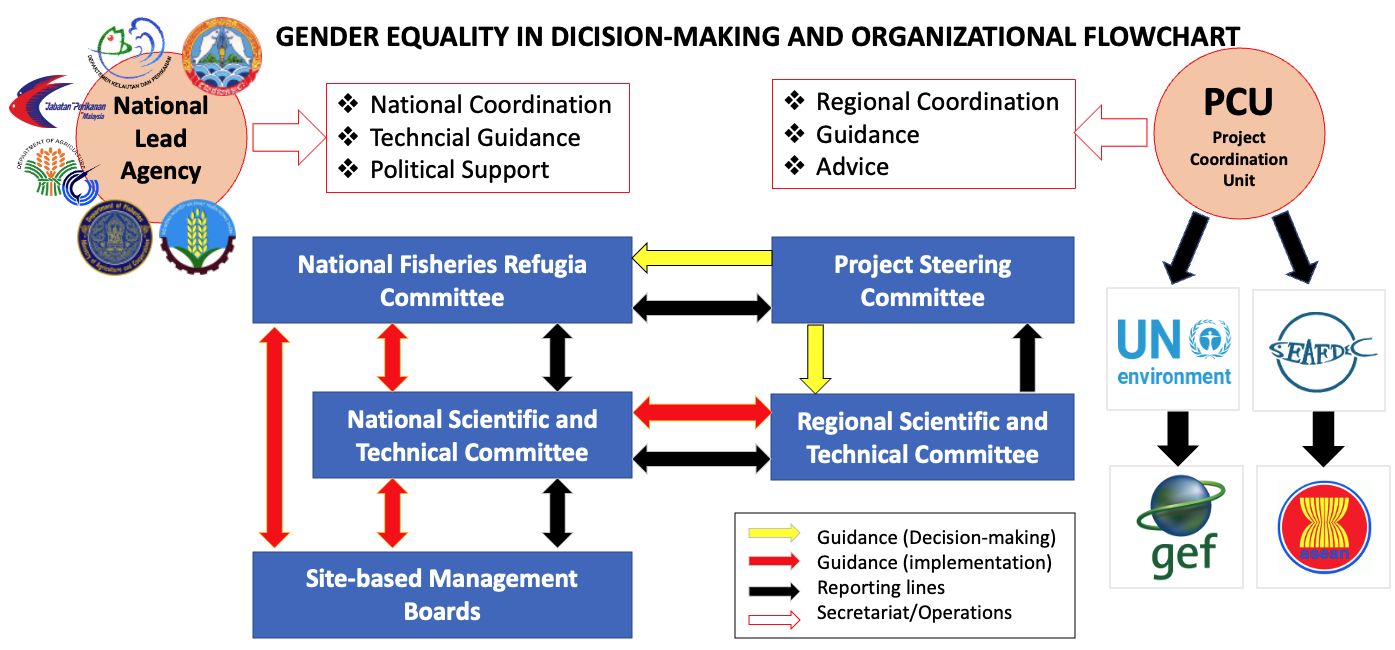
Figure 2: Decision maker and organization flowchart
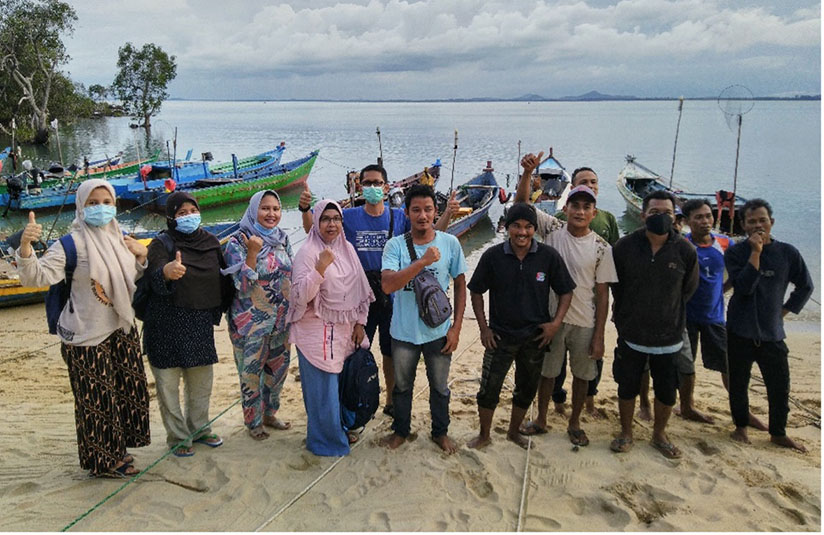
Figure 3: Socio-economic study in Bangka Belitung, Indonesia
As shown in Figure 4, the Project was able to attain the rights of both women and men in establishing and operating a regional refugia system, bringing about considerable achievement in Component 1 of the Fisheries Refugia Project. Overall, an average of about 38 percent of women actively participated in all activities of the Project conducted on all sites, which was higher than the targeted proportion endorsed by the GEF/CEO.
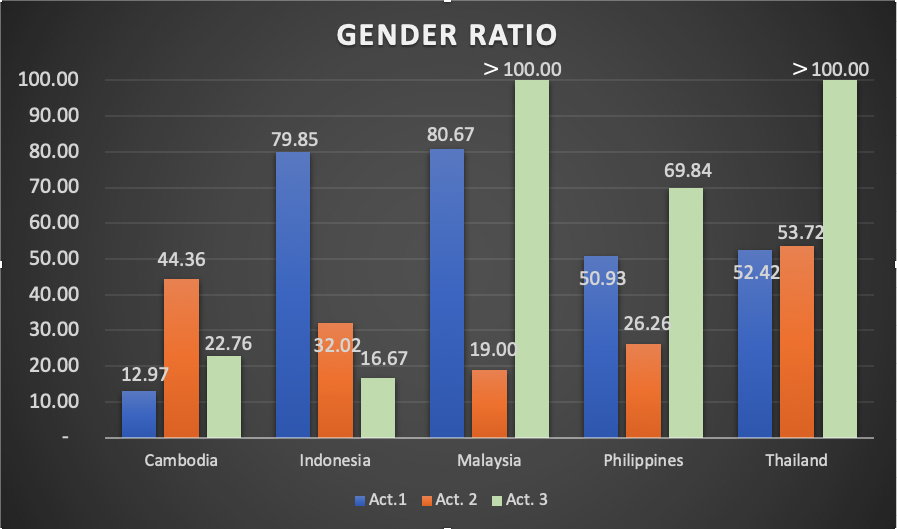
Figure 4: Gender Ratio in percent between women and men engaged in Fisheries Refugia Project activities in the participating countries (Activity 1 - National coordination and management including legislation reform, Activity 2 - Capacity-building/stakeholder consultations, Activity 3 - Surveys/monitoring and enforcement)
As a domino effect, this achievement has indeed led to the realization of the overall targets and objectives of the project's various activities. The Project has successfully mainstreamed gender into its development and implementation and improved women's involvement in the Project activities. The capacity-building activities have enhanced the role of women in fisheries refugia management bringing about considerable rights to women in fisheries management.
Therefore, having empowered the fishing communities at the 15 sites, the Project has catalyzed community action for fisheries refugia management and strengthened the participation of civil society and community organizations in fisheries refugia management. Indeed, such a feat, which had been attained mainly through gender mainstreaming and promoting gender dimension in the execution of the Project, has resulted in the improved role of women in fisheries management and balanced benefits obtained by the fishermen and fisherwomen in the established refugia sites bringing about gender equality and gender equity and contributing to the pool of projects in the Southeast Asian region where gender had been successfully mainstreamed not only in the project development but also in the implementation, monitoring, and evaluation.
It should be noted some countries encountered various constraints in implementing specific activities amidst the onslaught of the COVID-19 pandemic in 2020-2021. Nonetheless, the targets of the Project were still pursued by the participating countries by pooling the implementation of specific activities, considering the critical role of women and the need for their full and equal participation and leadership in all areas and the removal of barriers to their full and equal participation in decision-making and management at all levels.
References
1) Arenas, M.C. & Lentisco, A. (2011). Mainstreaming gender into project cycle management in the fisheries sector. FAO Regional Office for Asia and the Pacific, Bangkok, Thailand; 92 p
2) Choo, P.S., Hall, S.J. & Williams, M.J. (eds). (2006). Global Symposium on Gender and Fisheries: Seventh Asian Fisheries Forum, 1-2 December 2004, Penang, Malaysia. WorldFish Center, Penang, Malaysia; 174 p
3) GEF. (2017). https://www.thegef.org/sites/default/files/documents/Gender_Equality_Policy.pdf
4) FAO. (2013). FAO Policy on Gender Equality: Attaining Food Security Goals in Agriculture and Rural Development. FAO, Rome, Italy; 32 p
5) FAO. (2015). Voluntary Guidelines for Securing Sustainable Small-Scale Fisheries in the Context of Food Security and Poverty Eradication. Food and Agriculture Organization of the United Nations. Rome, Italy; 44 p
6) ILO. (2000). ABC of Women Workers’ Rights and Gender Equality. International Labour Organization, Geneva, Switzerland; 209 p
7) Needham, S. (2011). Shining the light on the invisible woman in fisheries development. Fish for the People, Vol 9 No 1 (2011), Southeast Asian Fisheries Development Center, Bangkok, Thailand; pp 2-5
8) Ruangsivakul, S. (2011). Recognizing gender capability in promoting sustainable fisheries development and poverty alleviation in fishery communities. Fish for the People, Vol 9 No 2 (2011), Southeast Asian Fisheries Development Center, Bangkok, Thailand; pp 40-43
9) Satapornvanit, A.N. (2018). The Importance of Gender in Fisheries: The USAID Oceans Experience. Fish for the People, Vol 16 No 2 (2018), Southeast Asian Fisheries Development Center, Bangkok, Thailand; pp 9-13
10) SEAFDEC. (2018). Meeting Report: Regional Dialogue on Gender Dimension in Coastal and Fisheries Resources Management in South Asia and Southeast Asia, 15-16 November 2018, Bangkok, Thailand; 47 p
11) SEAFDEC. (2019). SEAFDEC Gender Strategy—Mainstreaming gender in SEAFDEC and its programs. Southeast Asian Fisheries Development Center, Bangkok, Thailand
12) SEAFDEC. (2020). Practical Guide for Gender Analysis in Small-scale Fisheries and Aquaculture in Southeast Asia. Southeast Asian Fisheries Development Center, Bangkok, Thailand; 64 p
13) SEAFDEC/TD. (2020). SPECIAL REPORT: SEAFDEC initiatives on mainstreaming gender in fisheries and aquaculture in the Southeast Asian region. SEAFDEC Newsletter, Vol.43 No.1 (January-March 2020). Southeast Asian Fisheries Development Center. Bangkok, Thailand; pp 8-9
14) SEAFDEC/TD. (2021). SPECIAL REPORT: Underscoring the importance of capacity-building activities on promoting gender in small-scale fisheries and aquaculture in Southeast Asia. SEAFDEC Newsletter, Vol. 44 No. 2 (April-June 2021). Southeast Asian Fisheries Development Center. Bangkok, Thailand; pp 8-9
15) Siar, S.V. (2003). Knowledge, gender, and resources in small-scale fishing: The case of Honda Bay, Palawan, Philippines. Environmental Management, 31(5): 569-580
16) Sornkliang, J., Tiaye, R., Yenpoeng, T., Kaewtankam, V., & Pholcharoen, J. (2018). Recognizing gender roles in the fisheries value chain: local fishing communities of Thailand in focus. Fish for the People, Vol 16 No 2 (2018), Southeast Asian Fisheries Development Center, Bangkok, Thailand; pp 15-19
17) Williams, M.J., Nandeesha, M.C. & Choo, P.S. (2006). Changing Traditions: A Summary Report on the First Global Look at the Gender Dimensions of Fisheries. In: Choo, P.S., S.J. Hall and M.J. Williams (eds). 2006. Global Symposium on Gender and Fisheries: Seventh Asian Fisheries Forum, 1-2 December 2004, Penang, Malaysia. WorldFish Center, Penang, Malaysia; pp 1-6
Updated_30 September 2022
Dr. Somboon Siriraksophon is the Project Manager of the SEAFDEC/UNEP/GEF Project on “Establishment and Operation of a Regional System of Fisheries Refugia in the South China Sea and the Gulf of Thailand. Email: ssiriraksophon63@gmail.com
